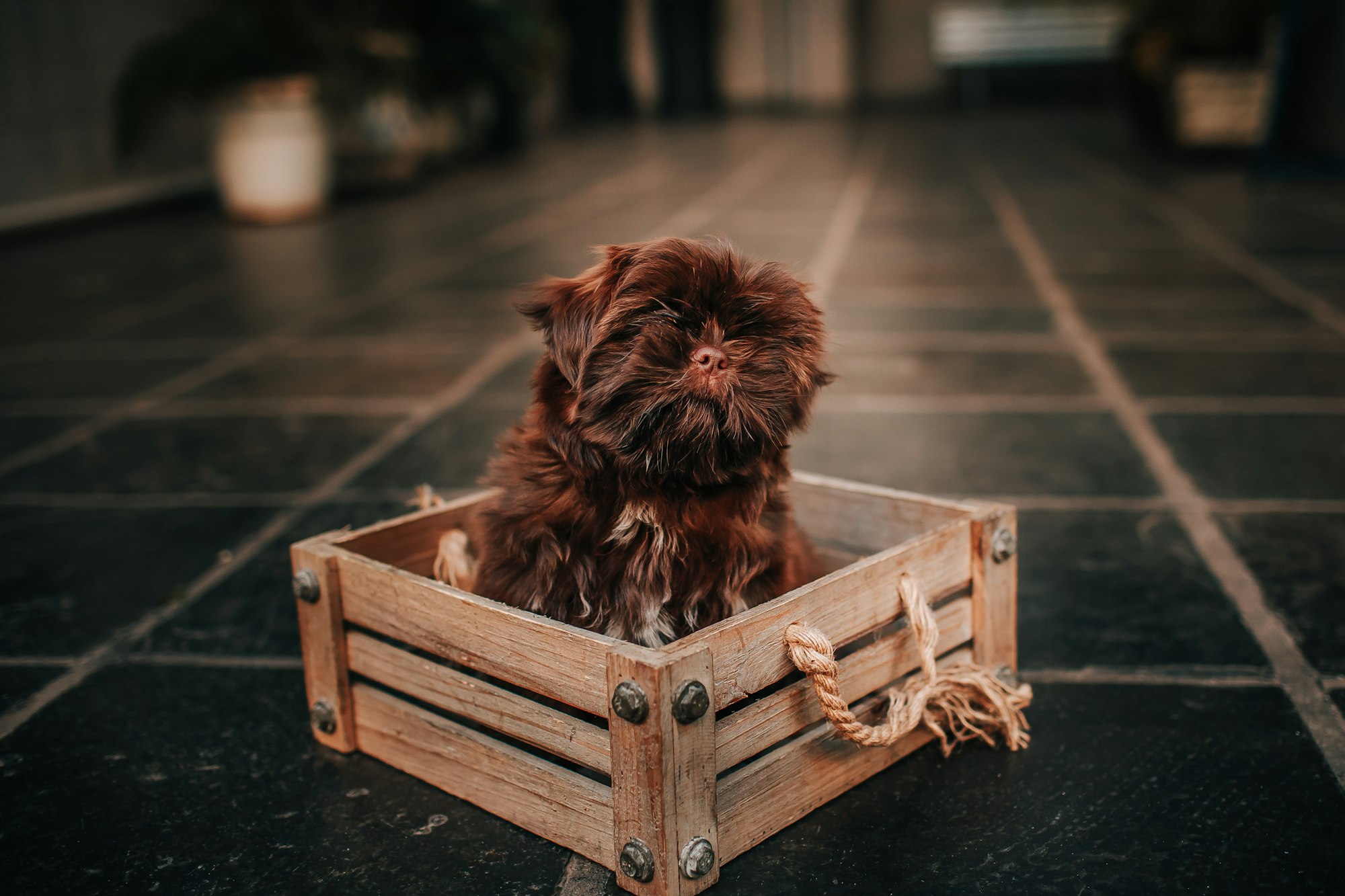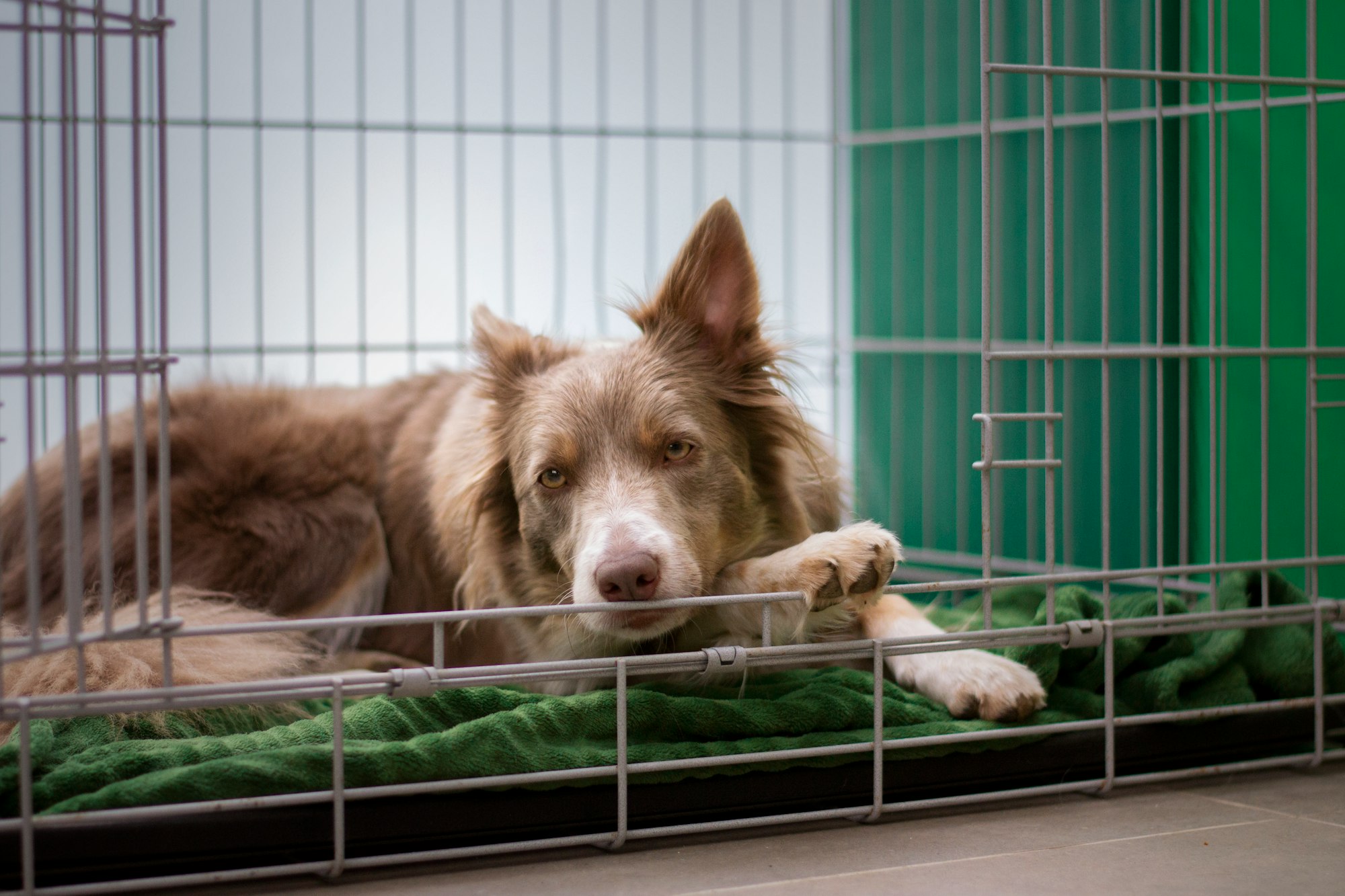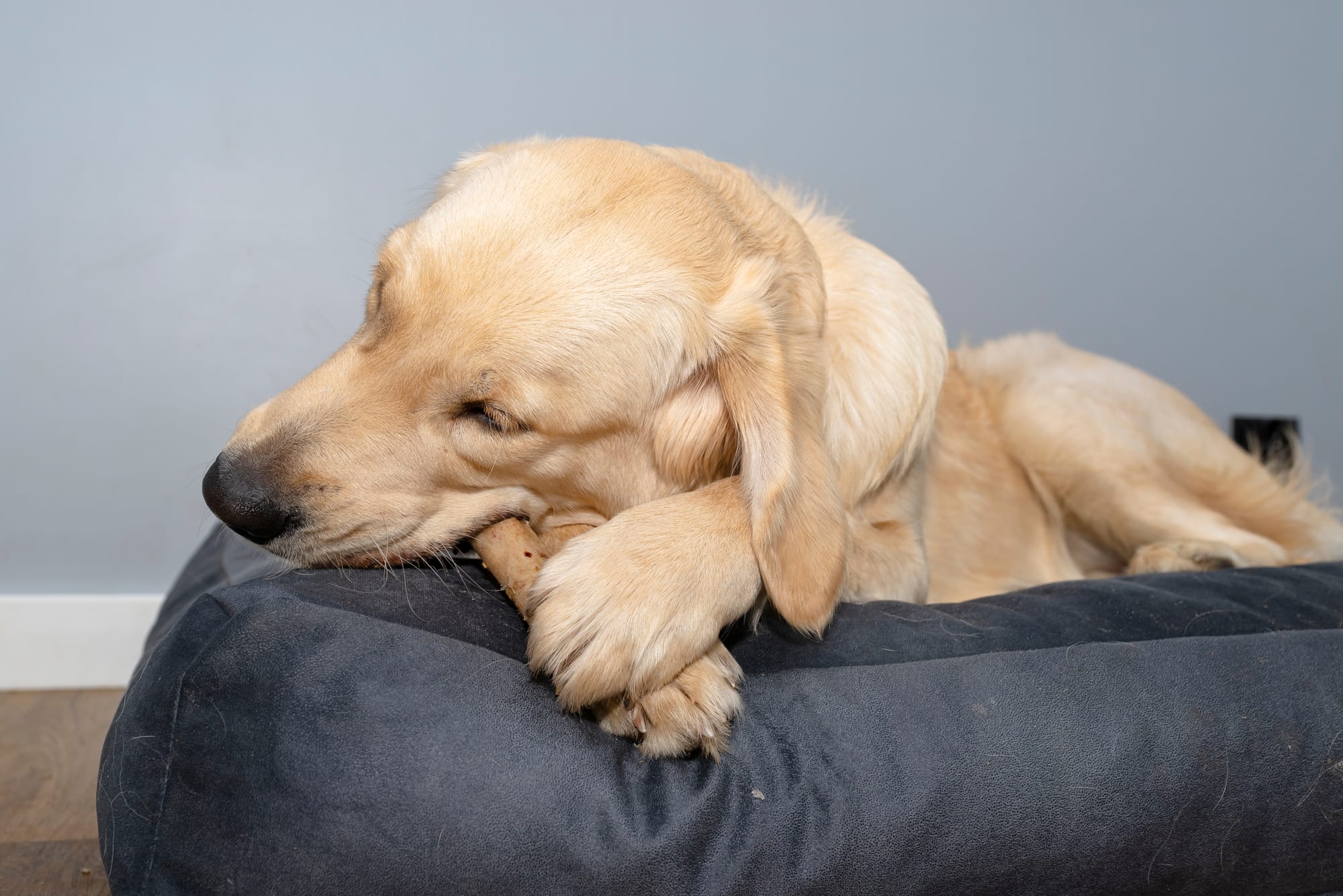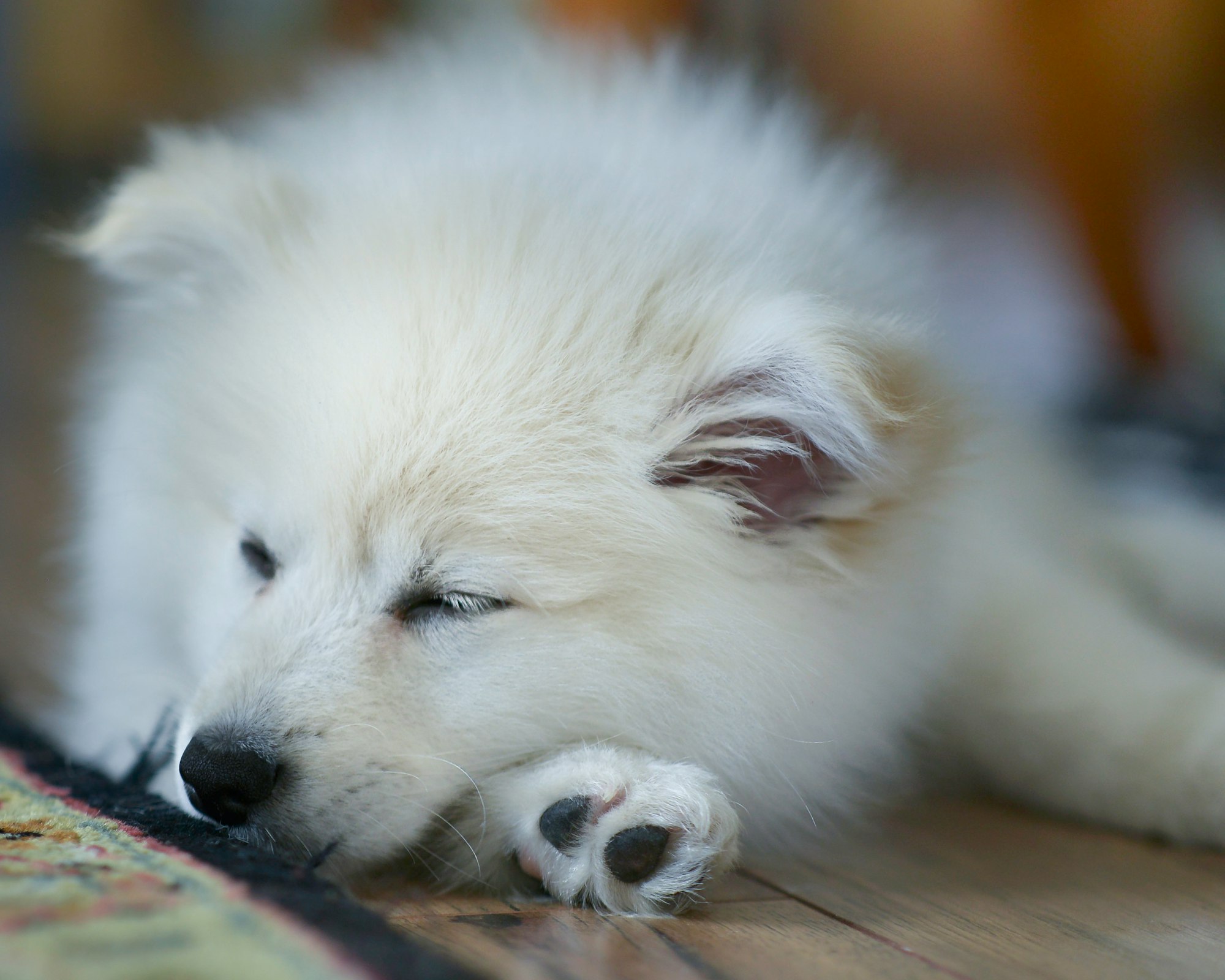Bringing home a new puppy is an exciting time, but it also comes with responsibilities. One of the most important aspects of puppy care is crate training. Crate training provides a safe and secure space for your puppy and helps with potty training and preventing destructive behaviors. However, it's essential to strike a balance between crate time and socialization. In this article, we will discuss how long you can leave an 8-week-old puppy in a crate and provide some tips to ensure their well-being.

Understanding the Needs of an 8-Week-Old Puppy
At 8 weeks old, puppies are still in their early stages of development and require plenty of attention and care. They have small bladders and limited bladder control, making frequent potty breaks essential. Additionally, puppies have high energy levels and need proper mental and physical stimulation. Understanding these needs will help you determine the appropriate crate time for your furry friend.
Introducing Crate Training
Crate training is an effective method to provide a secure and den-like environment for your puppy. It mimics a natural den, which dogs instinctively seek for comfort and safety. The crate serves as a personal space where your puppy can rest, relax, and feel secure. It also aids in housebreaking by teaching them to hold their bladder and bowels.
Ideal Crate Time for an 8-Week-Old Puppy
As a general guideline, an 8-week-old puppy should not be left in a crate for more than 1 to 2 hours at a time during the day. Puppies at this age have limited bladder control and need frequent bathroom breaks. Keeping them in the crate for longer periods can lead to accidents, anxiety, and discomfort.
Factors to Consider for Crate Duration
When determining how long you can leave your puppy in a crate, several factors come into play. Consider the following:
1. Age: Young puppies have limited bladder control and need frequent potty breaks. As they grow older, their bladder capacity increases, allowing for longer crate durations.
2. Breed and Size: Smaller breeds generally have smaller bladders and may need more frequent bathroom breaks. Larger breeds may have greater bladder control and can tolerate longer crate times.
3. Activity Level: Active and high-energy puppies may become restless or anxious if confined for too long. They require more mental and physical stimulation outside the crate.
4. Potty Training Progress: If your puppy is still in the early stages of potty training, shorter crate durations are necessary to prevent accidents and reinforce appropriate elimination habits.
5. Individual Needs: Every puppy is unique, so it's crucial to observe their behavior and adjust crate time accordingly. Some puppies may tolerate longer crate durations, while others may become anxious or distressed.
Tips for Successful Crate Training
Crate training can be a positive experience for both you and your puppy. Follow these tips for successful crate training:
1. Introduce the Crate Gradually: Allow your puppy to explore the crate at their own pace. Start by leaving the crate door open and placing treats or toys inside to encourage them to enter voluntarily.
2. Make the Crate Comfortable: Ensure the crate is cozy and inviting by adding soft bedding or blankets. Consider using an appropriately-sized crate to give your puppy enough space to stand, lie down, and turn around comfortably.
3. Create Positive Associations: Associate the crate with positive experiences by offering treats, praise, or rewards when your puppy enters or stays in the crate. Make it a pleasant and rewarding space for them.
4. Stick to a Consistent Routine: Establish a regular schedule for crate time, meals, playtime, and potty breaks. Consistency helps your puppy adjust to the routine and reduces anxiety.
5. Avoid Using the Crate as Punishment: Never use the crate as a form of punishment. It should be a haven for your puppy, not a place associated with negative experiences. Using the crate as punishment may lead to fear or resistance.
6. Provide Mental Stimulation: Engage your puppy's mind by offering interactive toys, puzzle feeders, or chew toys within the crate. Mental stimulation helps alleviate boredom and keeps your puppy occupied.
7. Monitor and Supervise: While your puppy is in the crate, keep an eye on them to ensure their safety and comfort. Address any signs of distress, such as excessive whining or pawing at the crate, promptly.
Balancing Crate Time with Socialization
While crate training is critical, it's equally vital to prioritize socialization for your puppy's overall development. Here's how you can balance crate time with socialization:
1. Scheduled Socialization Time: Plan dedicated periods outside the crate for socialization. Allow your puppy to interact with family members, other pets (if applicable), and supervised, well-mannered happy dogs in controlled environments.
2. Explore New Environments: Take your puppy to different places, such as parks, pet-friendly stores, or outdoor events. Exposing them to new sights, sounds, and smells helps build confidence and social skills.
3. Positive Experiences: Ensure that socialization experiences are positive and rewarding for your puppy. Use treats, praise, and gentle encouragement to make encounters with people and other animals enjoyable.
4. Enroll in Puppy Classes: Consider enrolling your puppy in a reputable puppy socialization or training class. These classes provide opportunities for structured socialization and learning in a controlled environment.
5. Supervised Playdates: Arrange playdates with other puppies or friendly, well-vaccinated adult dogs. Supervised interactions help your puppy learn appropriate social behaviors and develop good manners.
Remember, while socialization is essential, it's important not to overwhelm your puppy. Gradually expose them to new experiences and environments, and always prioritize their comfort and safety.
Signs of Distress or Discomfort
While crate training your puppy, it's crucial to be aware of signs that indicate distress or discomfort. Keep an eye out for the following behaviors:
1. Excessive Whining or Barking: Persistent whining or barking may signal that your puppy is feeling anxious, scared, or frustrated.
2. Pacing or Restlessness: If your puppy appears restless, constantly moving around the crate, or repeatedly changes positions, it may indicate their discomfort.
3. Attempting to Escape: scratching and licking, biting, or pawing at the crate door or walls could be a sign of distress or an attempt to escape confinement.
4. Destructive Behavior: Chewing or damaging the crate, bedding, or toys can be a response to stress or anxiety.
5. Excessive Panting or Drooling: Excessive panting or drooling beyond what is normal for the environment and temperature may indicate your puppy's discomfort.
6. Lack of Appetite or Refusal to Enter the Crate: If your puppy refuses to enter the crate or shows a sudden loss of appetite, it may be due to negative associations or anxiety related to the crate.
If you notice any of these signs, it's essential to address your puppy's needs and alleviate their distress. Reevaluate their crate setup, consider adjustments to their crate time, and provide reassurance and positive reinforcement.

Gradually Increasing Crate Time
As your puppy grows older and gains more control over their bladder and behavior, you can gradually increase the duration of crate time. Follow these steps for a smooth transition:
1. Start with Short Intervals: Begin crate training with short periods of confinement, such as 15 to 30 minutes. Use this time to observe your puppy's behavior and ensure they remain calm and comfortable.
2. Gradually Extend the Duration: Once your puppy is comfortable with shorter intervals, slowly increase the crate time by an additional 15 to 30 minutes. Monitor their behavior during each session to ensure they adjust well.
3. Observe for Distress Signals: Pay close attention to any signs of distress or discomfort. If your puppy becomes anxious or exhibits negative behaviors, scale back the duration and provide additional support.
4. Continue Incremental Increases: Gradually extend crate time over several days or weeks as your puppy adapts. Aim for longer intervals of 1 to 2 hours, gradually building up to the maximum recommended time based on their age, size, and individual needs.
Remember, each puppy is unique, and some may adapt more quickly than others. Always prioritize your puppy's well-being and adjust the training process to their comfort level.
Alternatives to Crate Training
While crate training is a popular method, it may not be suitable for every dog or owner. Here are a few alternatives to consider:
1. Playpens: A playpen provides a larger confined space for your puppy to move around freely while still offering some boundaries and security.
2. Puppy-Proofed Rooms: Puppy-proof a small area or room in your home by removing any hazards and ensuring a safe environment. Use baby gates or barriers to limit access.
3. Supervised Confinement: Instead of using a crate, you can confine your puppy to a small, puppy-proofed area of your home while keeping a close eye on them to prevent accidents or destructive behavior.
4. Dog-Sitter or Doggy Daycare: If you're unable to be home for extended periods, consider enlisting the help of a trusted dog-sitter or utilizing doggy daycare services to provide supervised care and socialization.
Choose the alternative that best suits your puppy's needs and your lifestyle while ensuring their safety, comfort, and well-being.
Importance of Exercise and Mental Stimulation
Exercise and mental stimulation are vital components of your puppy's overall well-being. Here's why they are required:

1. Physical Health: Regular exercise helps keep your puppy physically fit and maintains a healthy weight. It promotes strong muscles, good cardiovascular health, and joint flexibility.
2. Mental Stimulation: Engaging your puppy's mind through various activities helps prevent boredom and destructive behaviors. Mental stimulation can include puzzle toys, obedience training, or interactive games that challenge their problem-solving abilities.
3. Behavioral Benefits: Sufficient exercise and mental stimulation contribute to a calmer and more well-behaved puppy. It helps prevent behavioral issues like excessive barking, chewing, or digging that may arise due to pent-up energy or boredom.
4. Bonding Opportunities: Exercising and engaging with your puppy creates opportunities for bonding. It strengthens the relationship between you and your furry friend, leading to a deeper connection and mutual understanding.
5. Promotes Healthy Sleep: Adequate physical activity and mental stimulation contribute to better sleep quality for your puppy. A tired puppy is more likely to have a restful sleep, which is essential for their overall growth and development.
Remember to tailor the exercise and mental stimulation to your puppy's age, breed, and energy levels. Easing fear at the vet to determine the appropriate amount and type of activities for your specific puppy.
Ensuring a Comfortable Crate Environment
Creating a comfortable crate environment is crucial for your puppy's well-being and positive association with the crate. Consider the following tips:

1. Proper Size: Choose a crate that provides enough space for your puppy to stand, turn around, and lie down comfortably. Avoid crates that are too large, as they may encourage your puppy to eliminate inside the crate.
2. Bedding and Cushioning: Add soft bedding, such as blankets or crate pads, to make the crate cozy and comfortable for your puppy. Ensure the bedding is safe and does not pose a choking hazard.
3. Temperature and Ventilation: Place the crate in a well-ventilated area to ensure proper airflow. Avoid direct sunlight or drafts that may make your puppy uncomfortable. Monitor the temperature to prevent overheating or chilling.
4. Safe and Secure: Check the crate for any sharp edges or protrusions that could harm your puppy. Ensure the crate is stable and secure, with sturdy latches or locks to prevent accidental escapes.
5. Toys and Enrichment: Provide a few appropriate toys or chew items to keep your puppy entertained while in the crate. Interactive toys or treat-dispensing toys can help alleviate boredom and provide mental stimulation.
Regularly inspect the crate and bedding for cleanliness. Ensure that the crate is a pleasant and inviting space for your puppy to relax and feel secure.
Crate Training Dos and Don'ts
To make crate training a positive experience, follow these crate training dos and don'ts:
Dos:
1. Do Introduce Gradually: Introduce the crate gradually, allowing your puppy to explore and become familiar with it at their own pace.
2. Do Make it Positive: Associate the crate with positive experiences by offering treats, praise, and rewards when your puppy enters or stays in the crate voluntarily.
3. Do Establish a Routine: Establish a consistent routine for crate time, meals, playtime, and potty breaks. This helps your puppy understand what is expected and reduces anxiety.
4. Do Provide Breaks and Exercise: Offer regular bathroom breaks and opportunities for exercise and playtime outside the crate to prevent restlessness or discomfort.
5. Do Use Calming Techniques: Use calming techniques such as soothing music or covering the crate partially with a blanket to create a den-like atmosphere.
Don'ts:
1. Don't Force or Punish: Never force your puppy into the crate or use it as a form of punishment. This can create negative associations and lead to anxiety or resistance.
2. Don't Leave for Extended Periods: Avoid leaving your puppy in the crate for excessively long periods without breaks. Puppies need regular social interaction and bathroom breaks.
3. Don't Neglect Mental Stimulation: Remember to provide mental stimulation and interactive toys to prevent boredom and ensure a positive experience in the crate.
By following these dos and don'ts, you can establish a positive and successful crate training routine for your puppy.
Transitioning Out of Crate Training
As your puppy grows older and gains more control over their bladder and behavior, you can gradually decrease the reliance on the crate. Start by leaving the crate door open while you are home and supervising your puppy. Eventually, you can allow them to have access to larger areas of your home, always ensuring their safety and providing alternative resting spots.

Conclusion
Crate training is an effective method for providing security and structure for your 8-week-old puppy. However, it's crucial to balance crate time with socialization, exercise, and mental stimulation. By understanding your puppy's needs and observing their behavior, you can ensure a positive crate training experience. Remember, each puppy is unique, so tailor your approach to suit their requirements.
FAQs
1. Can I leave my 8-week-old puppy in a crate overnight?
Leaving an 8-week-old puppy in a crate overnight is not recommended for an extended period. At this age, puppies have limited bladder control and may need to relieve themselves during the night. It's best to provide them with a designated potty area close to their crate and take them outside for bathroom breaks as needed.
2. How do I make the crate comfortable for my puppy?
To make the crate cozy and inviting, you can add soft bedding, such as blankets or crate pads. You can also place a few of their favorite toys inside the crate to keep them entertained. Additionally, using treats or puzzle toys in the crate can create a positive association and make it a pleasant space for your puppy.
3. What if my puppy doesn't like the crate?
If your puppy initially shows resistance or fear towards the crate, it's necessary to introduce it gradually and positively. Start by leaving the crate door open and enticing them with treats or toys. Allow them to explore the crate at their own pace, and avoid forcing them inside. With patience and positive reinforcement, most puppies can learn to feel comfortable in their crate.
4. How can I prevent my puppy from developing separation anxiety in the crate?
To prevent separation anxiety, gradually increase crate time while ensuring your puppy feels secure and comfortable. Practice leaving them in the crate for short periods and gradually extend the duration. Additionally, provide mental stimulation and interactive toys to keep them occupied while in the crate. Building a positive association with the crate and avoiding sudden departures or arrivals can also help reduce separation anxiety.
5. Can I use the crate for punishment?
No, the crate should never be used as a form of punishment. It should always be a safe and positive space for your puppy. Using the crate as a punishment can create negative associations, leading to anxiety or resistance towards crate training. Instead, focus on positive reinforcement and reward-based training methods to encourage your puppy to see the crate as a comfortable and secure den-like environment.






